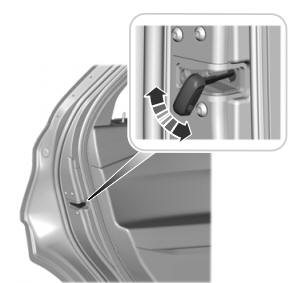Ford Explorer: Acceleration Control / Description and Operation - Acceleration Control - Overview
The acceleration controls consist of the accelerator pedal, APP sensor and bracket assembly.
The throttle is controlled by an APP sensor on the accelerator pedal assembly. The APP sensor sends a signal to the PCM in response to throttle pedal movements initiated by the driver. The PCM sends a signal to the electronic throttle control to increase or decrease the throttle position.
The engine management system electronically operates the throttle of the engine in response to throttle pedal movements initiated by the driver. In the event of a system failure, the engine management system provides a limp home mode which allows the vehicle to be driven with limited performance.
 Removal and Installation - Accelerator Pedal
Removal and Installation - Accelerator Pedal
Removal
NOTICE:
Activate the parking brake.
NOTE:
Make sure the vehicle powertrain is powered off.
NOTE:
Removal steps in this procedure may contain installation details...
Other information:
Ford Explorer 2020-2026 Owners Manual: Rear Seats
Adjusting the Second Row Rear Seats WARNING: Always drive and ride with your seatback upright and the lap belt snug and low across the hips. WARNING: Do not recline the seatback too far as this can cause the occupant to slide under the seatbelt, resulting in serious injury in the event of a collision...
Ford Explorer 2020-2026 Service Manual: General Procedures - Driveshaft Runout and Balancing
Special Tool(s) / General Equipment 100-002 (TOOL-4201-C) Holding Fixture with Dial Indicator Gauge Inspection NOTE: Driveline vibration exhibits a higher frequency and lower amplitude then high-speed shake. Driveline vibration is directly related to the speed of the vehicle and is noticed at various speeds...
Categories
- Manuals Home
- 6th Generation Explorer Owners Manual
- 6th Generation Explorer Service Manual
- General Procedures - Rear Camber Adjustment
- General Procedures - Brake Service Mode Activation and Deactivation
- Description and Operation - Jacking and Lifting - Overview
- New on site
- Most important about car
Child Safety Locks
When these locks are set, you cannot open the rear doors from the inside.

A child safety lock is on the rear edge of each rear door. You must set the child safety lock separately on each door.
Left-Hand Side

